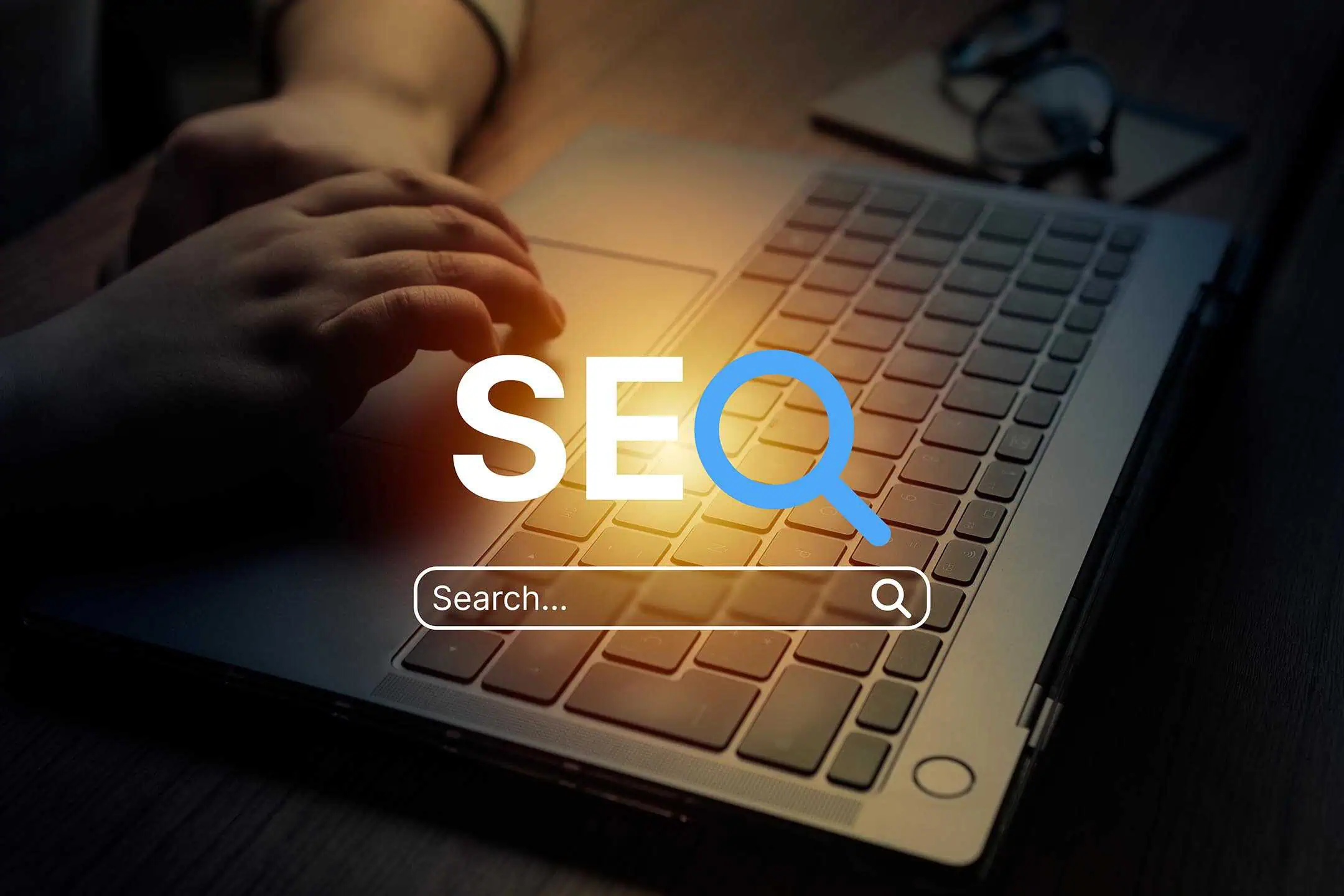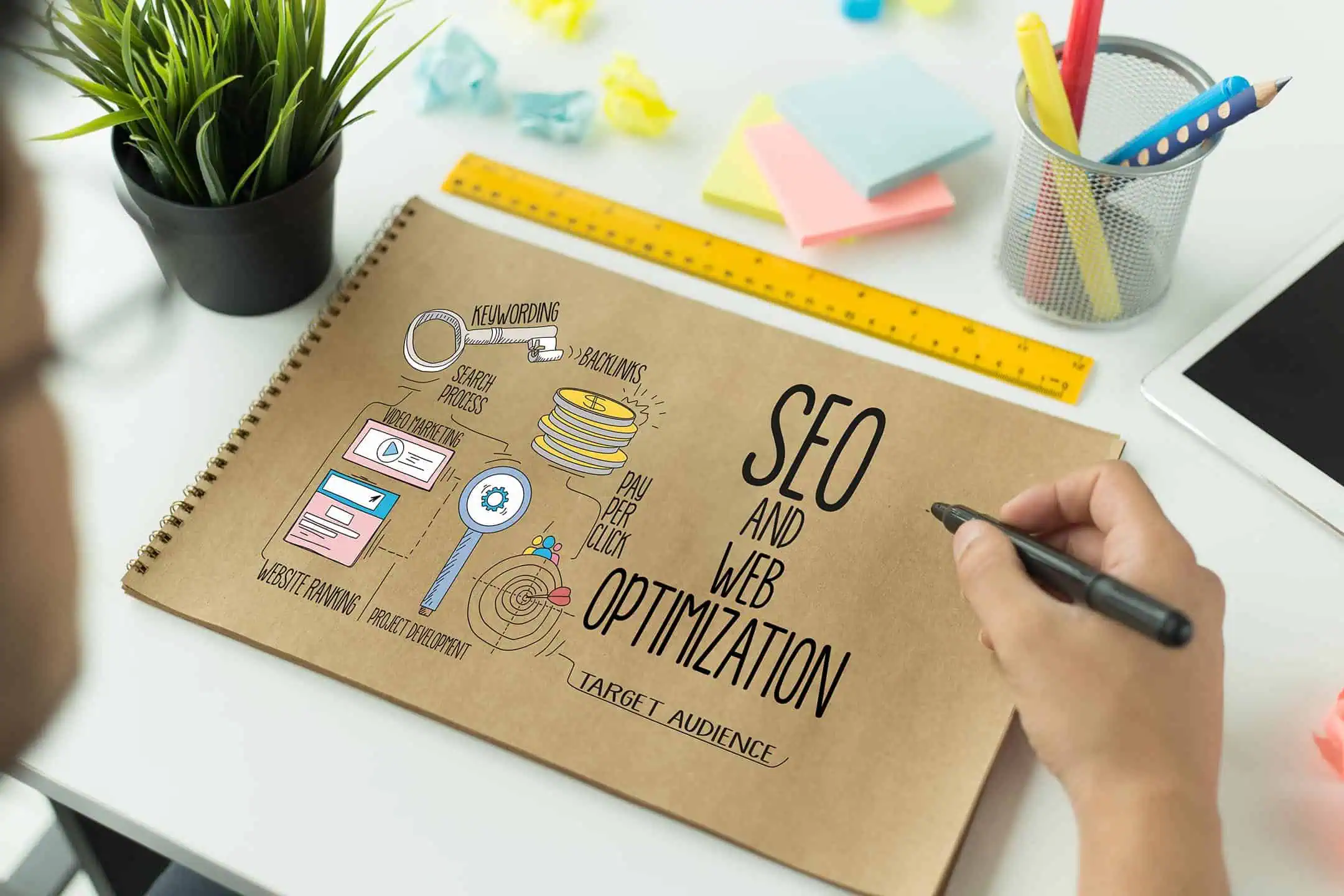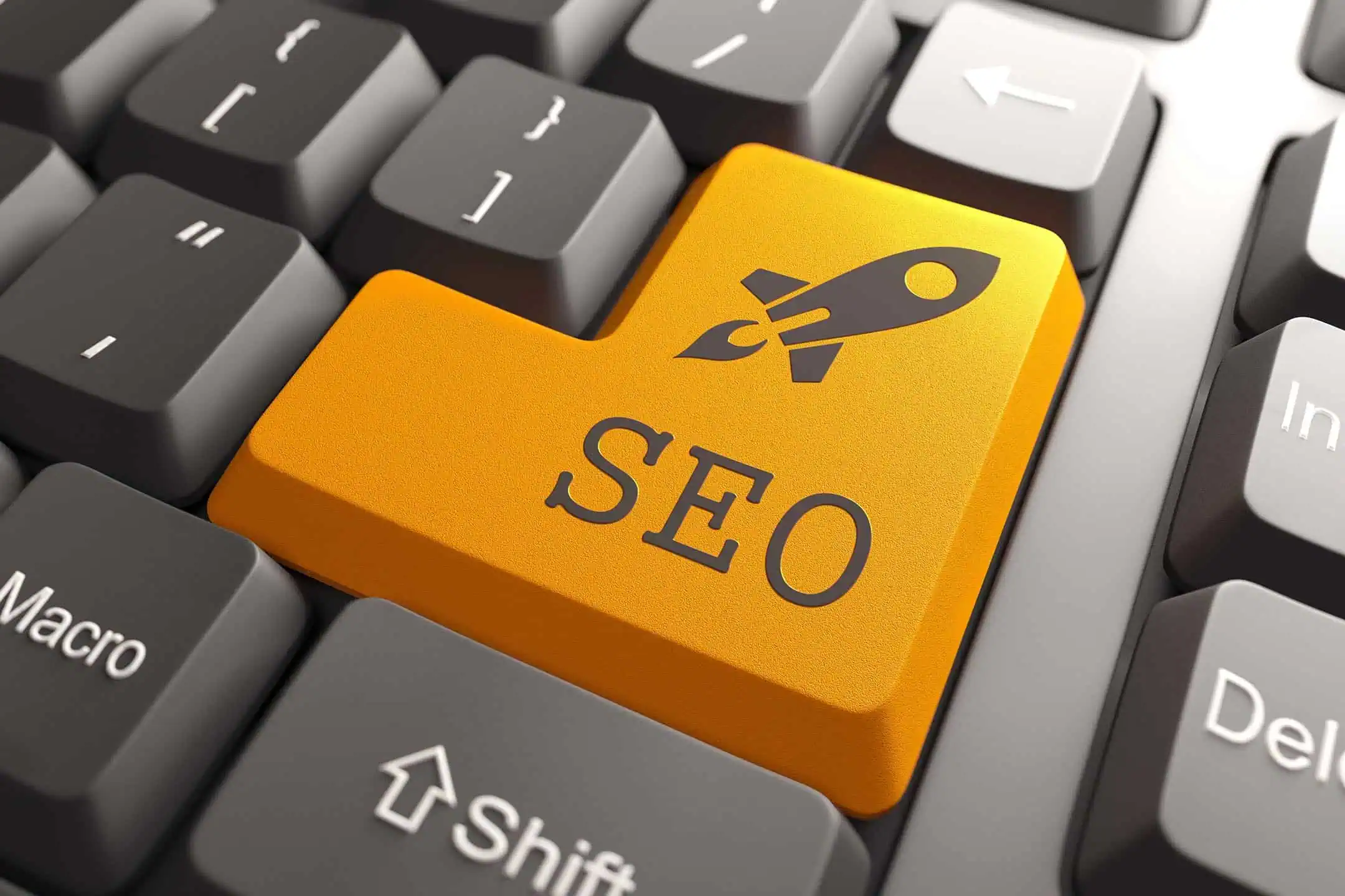On-page SEO is a foundational component of effective search engine optimisation, crucial for ensuring that websites are comprehensible not just to users, but also to search engines. Unlike off-page SEO, which deals with external signals such as backlinks, and technical SEO, which focuses on a website’s backend optimisations like site architecture and performance, on-page SEO involves elements directly on your web pages. These elements include content, images, and HTML tags, all of which can be optimised to boost your site’s visibility in search results.
Understanding and implementing on-page SEO is vital for any website owner aiming to increase their site’s organic traffic and visibility. Effective on-page SEO ensures that your content and site are optimised for both search engines and users, aligning with the latest algorithms and user expectations. In this blog, we will explore the core elements of on-page SEO, delve into the best practices for each, and discuss how to avoid common mistakes. By enhancing your understanding of on-page SEO, you can significantly improve your site’s potential to attract and engage more visitors.

What is On-Page SEO?
On-page SEO refers to the practice of optimising web pages to improve a site’s search engine rankings and earn organic traffic. This includes not only the content of the pages but also the HTML source code that can be optimised, such as title tags, meta descriptions, and image alt text. Unlike off-page SEO, which involves external signals like backlinks, on-page SEO focuses on enhancing elements within your own website that you can control.
The role of on-page SEO in the overall SEO strategy is critical, as it directly affects how search engines and users perceive the quality and relevance of your website. A well-optimised page not only signals relevancy to search engines – boosting your rankings for specific queries – but also improves the user experience, increasing the likelihood of conversions and repeat visits.
The core elements of on-page SEO include:
- Title Tags: These are an essential HTML element that provides a brief and accurate description of the content of your page. Title tags are displayed on search engine results pages (SERPs) as the clickable headline for a given result and are critical for usability, SEO, and social sharing.
- Meta Descriptions: Although not a direct ranking factor, meta descriptions can influence click-through rates from SERPs by providing a concise summary of the page content, enticing users to click on your link.
- Headings and Content Structure: Proper use of headings (H1, H2, H3) helps organise content in a structured manner, improving user experience and facilitating search engine crawlers to understand the key topics of your page.
- URL Structures: SEO-friendly URLs should be concise, easy to read, and include relevant keywords to improve ease of use and accessibility.
- Alt Text for Images: Adding descriptive alt text to images improves accessibility and helps search engines index your images properly, which can drive traffic through image search.
- Keyword Optimisation: Strategically using relevant keywords throughout your content, including in headings, descriptions, and the main body, helps improve your visibility for those terms.
- Internal Linking Strategy: Internal links are links that go from one page on a domain to a different page on the same domain. They are commonly used in main navigation and are key to helping establish information hierarchy and spreading link equity around websites.
Each of these elements works together to strengthen your site’s on-page SEO, making your content easily accessible and understandable for both users and search engines, leading to improved visibility and higher rankings.

Core Elements of On-Page SEO
These core elements of on-page SEO are integral to optimising your website and enhancing its visibility and user experience, ultimately driving better engagement and rankings in search results.
Meta Descriptions
Meta descriptions play a significant role in enticing clicks from SERPs. They provide a brief summary of the page’s content, influencing whether users decide to visit your site. While not a direct ranking factor, compelling meta descriptions can improve click-through rates, which indirectly influences SEO. Tips for crafting effective meta descriptions include keeping them concise (about 150-160 characters), including targeted keywords, and ensuring they accurately reflect the content of the page.
Headings and Content Structure
Using headings (H1, H2, H3, etc.) effectively organises content and improves readability, which is beneficial for both users and SEO. The H1 tag should be used for the main title and include primary keywords, while H2 and H3 tags structure the content into subsections. A logical content hierarchy helps search engines understand the relative importance of various sections of content on your page.
URL Structures
SEO-friendly URLs are concise, easy to read, and include relevant keywords. Characteristics of well-structured URLs include simplicity, relevance to the page content, and a hyphenated style for separating words. Examples of effective URLs are those that follow a consistent, readable format, such as https://example.com/category-keyword/subcategory-keyword/product-name.
Alt Text for Images
Alt text is crucial for accessibility and helps search engines index your images properly. It describes the appearance and function of an image on a page, and is especially important for users who rely on screen readers. Guidelines for optimising alt text include being descriptive, concise, and using keywords sparingly when they naturally describe the image’s content.
Keywords Optimisation
Effective keyword integration involves using relevant keywords throughout the content, including in headings, meta descriptions, and the body text. The key is to ensure keyword relevance and appropriate density to avoid keyword stuffing, focusing on integrating them naturally within valuable and informative content.
Internal Linking Strategy
Internal linking boosts page authority and improves user engagement by guiding visitors to other relevant pages on your site. Best practices include using descriptive anchor text that accurately reflects the linked page’s content, linking to high-priority pages more frequently, and ensuring links are naturally incorporated into the content.

Enhancing User Experience
The connection between user experience (UX) and on-page SEO is intrinsic and increasingly vital. Search engines like Google have continually adapted their algorithms to prioritise websites that offer a high-quality user experience. This shift means that on-page SEO is not just about optimising for search engines, but also for the human users who interact with your website. Enhancing UX directly contributes to improved SEO outcomes as search engines aim to serve users the most useful and enjoyable content possible.
Several key elements impact UX and, by extension, your SEO performance:
Site Speed
The speed at which your pages load is crucial for a good user experience. Websites that load quickly reduce bounce rates and encourage users to spend more time interacting with your content. Faster sites are favoured by search engines and are likely to rank higher in search results. Tools like Google PageSpeed Insights can be used to analyse and optimise your site’s loading speed.
Mobile-Friendliness
With the increasing prevalence of mobile browsing, having a mobile-friendly website is no longer optional. Mobile-friendliness includes responsive design that adapts to different screen sizes and layouts that facilitate easy navigation on a mobile device. Websites that provide a seamless mobile experience are more likely to retain visitors and perform well in mobile search rankings.
Interactive Elements: Interactive elements such as buttons, links, forms, and other interactive components must function correctly and be easy to use. Ensuring these elements work as intended across all devices enhances user satisfaction and engagement. Moreover, interactive features that provide value, like calculators or interactive infographics, can significantly enhance a user’s website experience and encourage longer visit durations.
By focusing on these key aspects of UX, website owners can create an environment that both users and search engines value. Enhancing UX not only satisfies the technical requirements of SEO but also addresses the real-world experiences of users, leading to better engagement, higher conversions, and improved SEO rankings.

Advanced Optimisation Techniques
Advanced optimisation techniques like Schema Markup and Open Graph Tags play a pivotal role in enhancing content visibility and engagement across the web and social media platforms.
Schema Markup: Implementation and Benefits
Schema Markup is a form of microdata added to a webpage to create an enhanced description (commonly known as a rich snippet), which appears in search results. Schema tells the search engines what your data means, not just what it says. Websites that use Schema Markup can enhance their search results with rich snippets, which stand out visually and provide additional, context-specific information to users. For example, if you’re implementing Schema for a local business, you can include details like business hours, contact info, and geographic location, making your listing more informative and attractive to potential customers. Implementing Schema can lead to higher click-through rates and improved SEO performance because it makes your web pages appear more valuable to search engines.
Open Graph Tags and Twitter Cards
Open Graph Tags and Twitter Cards allow webmasters to control how content is displayed on social networks when a page is shared. Open Graph Tags, developed by Facebook, let you specify which title, description, and image to show when your content is shared, creating a richer and more engaging post. Twitter Cards work similarly but are tailored for sharing on Twitter, allowing for media-rich posts that can drive traffic from the platform.
Both Open Graph Tags and Twitter Cards are crucial for enhancing content visibility on social media. They ensure that shared content is appealing and contextually relevant, increasing the likelihood of engagement and clicks back to your website. By integrating these tags, businesses can significantly enhance their social media marketing efforts, driving more traffic while maintaining a cohesive and branded message across platforms. These advanced techniques are essential for any site looking to maximise its presence both in search engines and on social media.

Common Mistakes in On-Page SEO
On-page SEO is crucial for enhancing a website’s visibility and user engagement, but several common missteps can hinder these efforts. Recognising and correcting these errors can significantly improve your SEO outcomes.
Misuse of Keywords
One of the most prevalent mistakes in on-page SEO is keyword stuffing. In the early days of SEO, filling pages with keywords was a tactic that could improve rankings, but today, it damages both your readability and rankings. Search engines like Google now prioritise content quality and user experience, penalising websites that overload their content with too many keywords. To avoid this, focus on using keywords thoughtfully and sparingly. Ensure they naturally fit into the context of your content, maintaining a natural flow that enhances the reader’s experience.
Neglecting Mobile Users
As mobile-first indexing becomes the standard, neglecting mobile users can be detrimental to your SEO efforts. A common oversight is maintaining a site that looks and works great on a desktop but offers a poor experience on mobile devices. To rectify this, adopt responsive web design that adjusts content dynamically according to the device’s screen size and invest in speeding up mobile page load times. Use tools like Google’s Mobile-Friendly Test to see how well your site performs on mobile and make the necessary adjustments.
Ignoring Meta Descriptions and Title Tags
While meta descriptions don’t directly influence rankings, they do affect click-through rates from the SERPs. A compelling meta description can be the difference between someone clicking on your listing or choosing a competitor’s. Similarly, optimised title tags should accurately reflect the content of the page while also being enticing and keyword-rich. Ensure each page has a unique title and meta description that acts as an advertisement for your content.
Poor URL Structure
URLs that are lengthy, have no connection to the page content, or are filled with unnecessary parameters can confuse users and search engines alike. A well-structured URL should be concise and include relevant keywords that reflect the content of the page. Avoid using excessive parameters, and whenever possible, use readable words instead of long strings of numbers.
Overlooking Internal Linking
Internal linking helps spread link equity throughout your site and can significantly boost the SEO performance of individual pages. It also helps users navigate your site more effectively and increases overall engagement. Make sure to use descriptive anchor text for internal links and link to and from your most important pages.
By avoiding these common mistakes, you can enhance your on-page SEO strategy, making your site more user-friendly and better optimised for search engines. Regular audits of your website can help identify these issues and guide you in making the necessary adjustments to maintain a strong online presence.

Tools and Resources for On-Page SEO
Optimising a website for on-page SEO is a meticulous process that requires the right tools to effectively research keywords, analyse data, and monitor performance. Here are some essential tools that can help you enhance your on-page SEO efforts:
Google Keyword Planner
A part of Google Ads, this tool is indispensable for keyword research. It allows you to discover new keyword ideas based on seed words or phrases related to your business. Google Keyword Planner provides insights into the search volumes and competition levels, helping you select keywords that are relevant and effective for your SEO strategy.
Ahrefs
A comprehensive SEO tool that offers detailed insights into your website’s keyword performance, backlinks, and competitor analysis. Ahrefs is particularly useful for content analysis and finding out what content in your niche does well. It also has a powerful keyword research tool that suggests keyword ideas based on what is working well for your competitors.
SEMrush
This all-in-one marketing toolkit is great for on-page and technical SEO audits, keyword research, and competitor analysis. SEMrush offers detailed reports on the health of your website and provides actionable insights that can help improve your SEO rankings.
Google Analytics
An essential tool for tracking website performance and user engagement. Google Analytics helps you understand your audience, measure how well your on-page SEO efforts are performing, and see which areas of your site need improvement.
Moz Pro
Moz Pro offers a suite of tools to help with every aspect of your SEO strategy, including site audits, keyword research, and performance monitoring. Its Page Optimisation feature provides specific recommendations for improving the SEO of individual pages.
Using these tools effectively can provide you with the necessary data to optimise your website’s on-page SEO, improve your content’s visibility in search results, and better engage with your audience. Regular use and analysis are key to staying ahead in the dynamic field of SEO.

The Importance of On-Page SEO
Mastering on-page SEO is crucial for enhancing your website’s visibility and engaging effectively with your audience. The essential steps involve meticulously optimising title tags, meta descriptions, and URLs to ensure they are search engine friendly and user-centric. Implementing a logical structure for your content using headings, and optimising your images with descriptive alt text, further refine the SEO quality of your pages. Additionally, effective keyword optimisation and strategic internal linking significantly contribute to improving your site’s relevance and authority in search engine results.
However, the landscape of SEO is continuously evolving, influenced by changes in search engine algorithms and shifts in user behaviour. It is vital for website owners and SEO practitioners to stay updated with the latest trends and techniques in SEO. Engage regularly with the SEO community, follow industry blogs, and utilise advanced tools to monitor your website’s performance and uncover new opportunities for optimisation.
By embracing continuous learning and being willing to adapt your strategies based on current best practices, you can ensure that your on-page SEO efforts are successful and resilient in the face of changing search engine criteria. Keep refining and testing your strategies to keep your website competitive and relevant in the ever-evolving digital marketplace.




